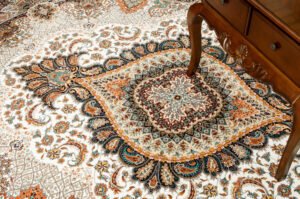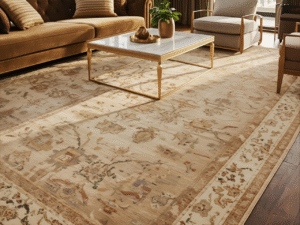Handmade rugs have long been revered as not just pieces of décor but as tangible links to history, culture, and craftsmanship. These exquisite works of art transcend their utilitarian purpose, becoming cherished treasures that tell stories of tradition and legacy. In this exploration of the history of handmade rug weaving, we delve into the intricate world of designer handmade rugs, celebrating the skill, passion, and cultural significance that make them timeless masterpieces.
The Rich Tapestry of Handmade Rugs:
Handmade rugs trace their origins back thousands of years, weaving a rich tapestry of cultural heritage. The art of crafting rugs by hand is an ancient tradition that has been passed down through generations, with each rug carrying the legacy of the artisans who meticulously created them. From the nomadic tribes of Central Asia to the palaces of Persia, handmade rugs have been an integral part of various societies, reflecting the aesthetics and values of their creators.
The Allure of Artisan Craftsmanship:
What sets handmade rugs apart is the artisan craftsmanship involved in their creation. Unlike machine-made counterparts, designer handmade rugs are meticulously crafted by skilled artisans who pour their expertise, creativity, and passion into every knot. This hands-on approach ensures that each rug is a unique work of art, showcasing the weaver’s individual style and the cultural influences that inspire them.
The Timeless Beauty of Traditional Techniques:
Handmade rug weaving involves a variety of traditional techniques, each contributing to the rug’s unique texture, pattern, and durability. The most common methods include hand-knotting, hand-tufting, and hand-weaving. Hand-knotting, in particular, is a time-honored technique where skilled artisans tie individual knots to create intricate patterns and designs. This meticulous process not only enhances the rug’s beauty but also ensures its longevity, making it a valuable investment for generations to come.
Designer Handmade Rugs: Where Art Meets Functionality:
In recent years, there has been a growing appreciation for designer handmade rugs that blend traditional techniques with contemporary aesthetics. Renowned designers collaborate with skilled artisans to create rugs that are not just functional floor coverings but true works of art. These designer handmade rugs often push the boundaries of conventional design, incorporating innovative materials, colors, and patterns to add a modern flair to the timeless craft.
Cultural Influences on Design:
The designs of handmade rugs are heavily influenced by the cultural backgrounds of the artisans who create them. Persian rugs, for example, are known for their intricate floral patterns and vibrant colors, reflecting the rich artistic heritage of Iran. Moroccan rugs, on the other hand, boast geometric designs inspired by the nomadic traditions of North Africa. These cultural influences not only make each rug visually captivating but also contribute to the global tapestry of design diversity.
Preserving Tradition in a Modern World:
In the face of mass production and technological advancements, the handmade rug industry faces challenges in preserving traditional craftsmanship. However, many artisans and designers are actively working to ensure the continuation of this age-old practice. Initiatives that promote fair trade, sustainable practices, and the empowerment of artisan communities contribute to the survival of handmade rug weaving as a living art form.
Investing in Timeless Elegance:
While designer handmade rugs may come with a higher price tag compared to their machine-made counterparts, they are investments in both artistry and longevity. The quality of materials, the expertise of artisans, and the timeless design make these rugs not just floor coverings but pieces that appreciate in value over time. Their durability ensures they can be passed down through generations, becoming cherished family heirlooms.
Conclusion:
From the nomadic weavers of ancient times to the contemporary collaborations between designers and artisans, the history of handmade rug weaving is a captivating journey through culture, tradition, and craftsmanship. Designer handmade rugs, with their fusion of traditional techniques and modern design, represent the evolution of this ancient craft in a world that continues to appreciate the value of timeless elegance. As we embrace these treasures for our homes, we not only enhance our living spaces but also become custodians of a rich cultural legacy that deserves to be celebrated and preserved for generations to come.





